Welcome to Ceramic Review
Ceramic Review is the magazine for contemporary and historical ceramics, ceramic art and pottery.
Ceramic Review Issue 333
May/June 2025
Ceramic Review is the magazine for contemporary and historical ceramics, ceramic art and pottery.
May/June 2025
Ceramic artist Adele Howitt discusses the history of Hornsea Pottery, the value of its ranges on today’s market, and a new art installation in the seaside town, created to celebrate the pottery’s distinctive designs
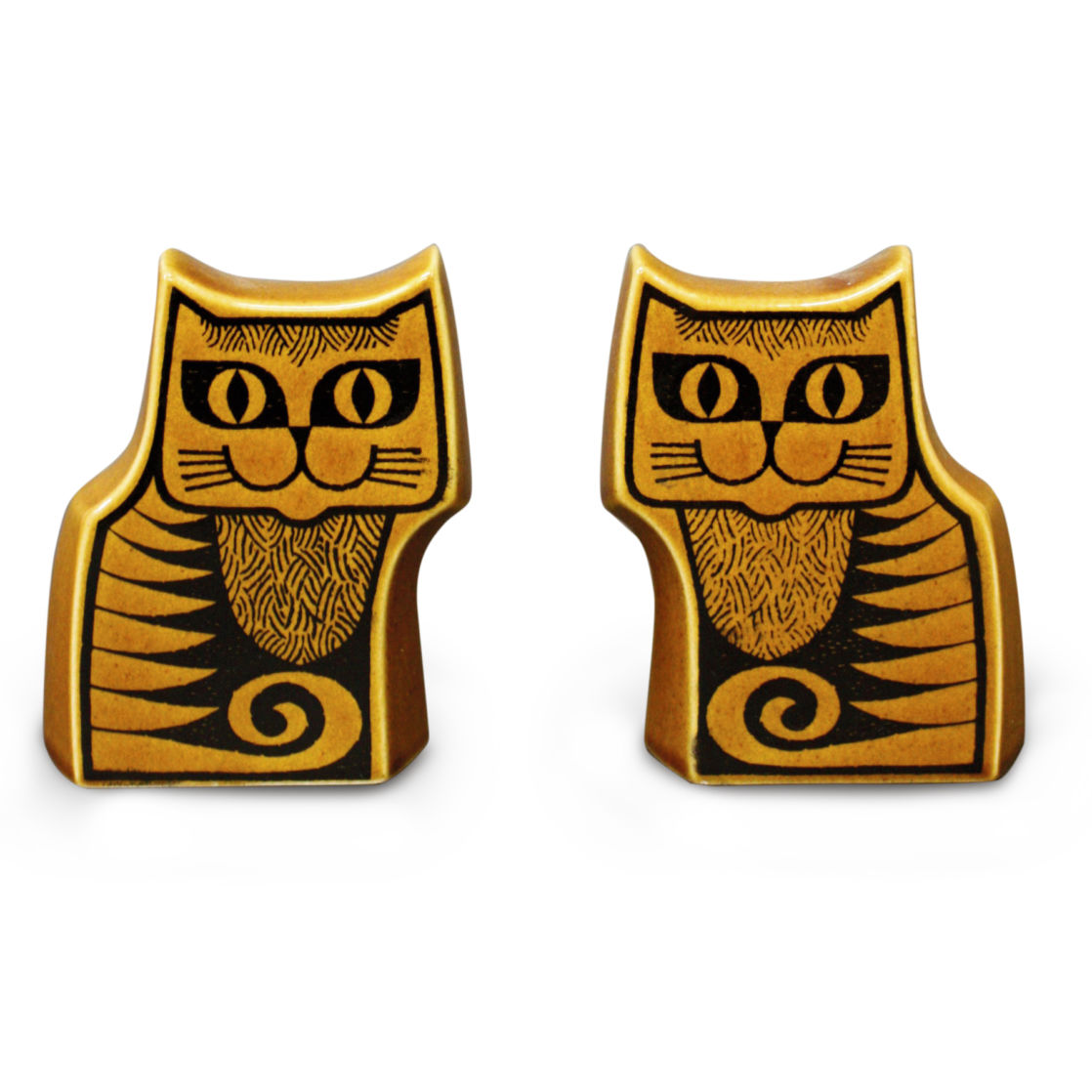
Hornsea Pottery Cat Salt & Pepper Pots by John Clappison | Images: Mike Eley; Adele Howitt
Hornsea is a small seaside town on the coast of East Yorkshire, around 15 miles north-east of Hull. Once the town’s largest employer, the Hornsea Pottery traded for 51 years before closing down in 2000. During this time, it produced some of the most innovative designs and production techniques within the pottery industry, won awards and produced tableware that is still recognised worldwide today.
Hornsea Pottery produced some of the most innovative designs and production techniques within the pottery industry, won awards and produced tableware that is still recognised worldwide today.
The town is about to unveil its largest public art installation inspired by and in celebration of the design portfolio from the historic pottery. The most iconic designs have been made into public realm materials, including 11 art pieces that have been installed around the town. The aim is to encourage new audiences and raise awareness of the once productive and successful pottery in an unlikely location.
BIRTH OF THE BUSINESS
In 1949, brothers Desmond and Colin Rawson set up a small business producing plaster of Paris gifts for the tourist market. The brothers had initially trained at Batley Art College, near Leeds, and later relocated to Hornsea. Without any pottery experience, they used their scullery at home as their studio, producing handmade gifts, which proved very popular. A local benefactor provided investment and the brothers bought a kiln, moved to a larger workshop, and began making in clay.
Clappison designed lots of innovative items of tableware and decorative pieces over the years, including themed mugs popular during the 1970s.
By the early 1950s, the business had grown and the brothers recognised the importance of crafted homeware design. They began to employ talented designers including John Clappison, Sara Vardy, Michael Walker, George Ratcliffe, Robin Pavitt, Dorothy Marion Campbell and model-maker Alan Luckham. By the 1960s, business became so successful that expansion was necessary and production moved to the old Hornsea Brick and Tile Works. It was converted into a factory to produce tableware and homewares, and included what was arguably one of the first leisure and retail centres.
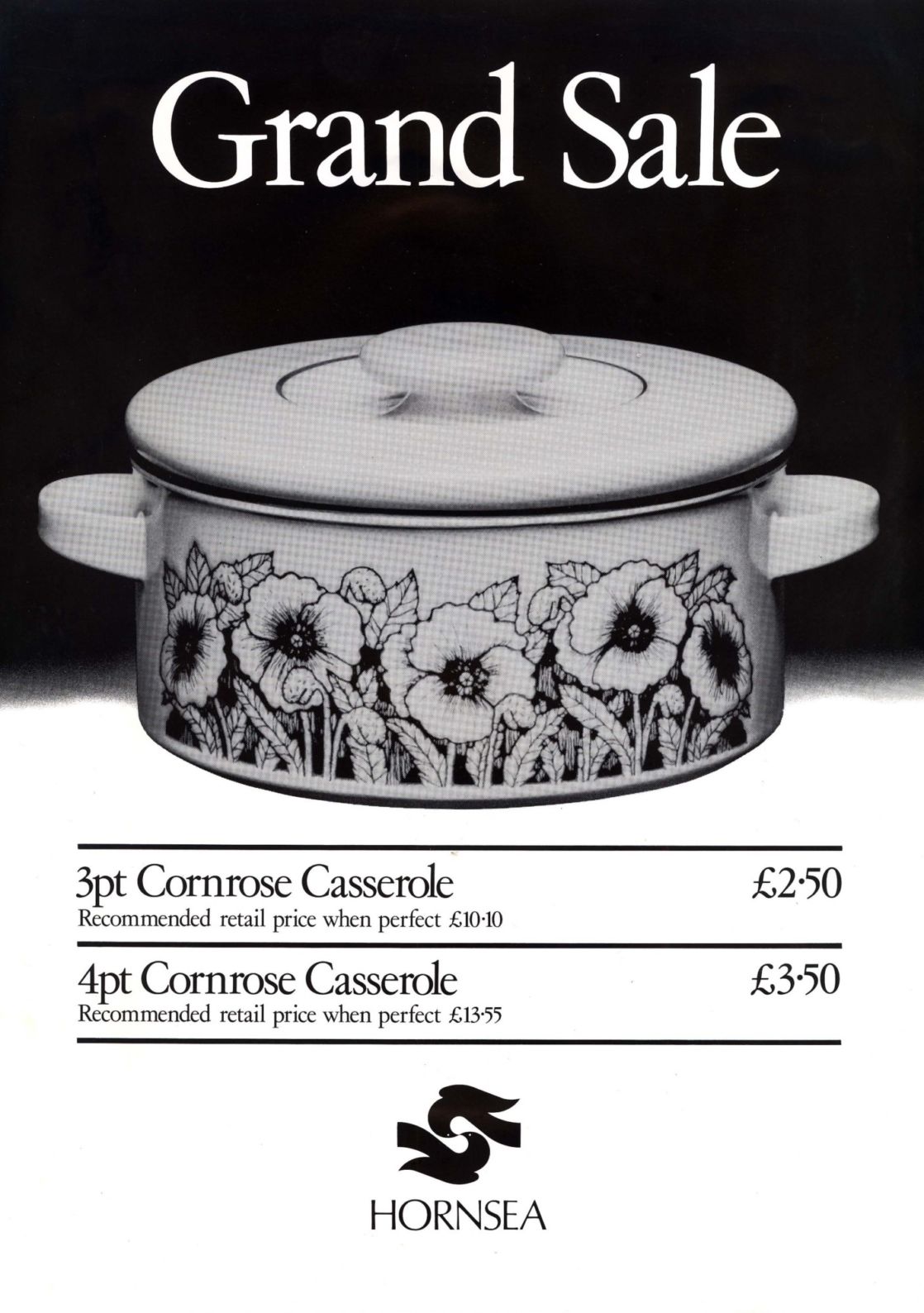
A Hornsea Pottery Cornrose Caserole price sheet
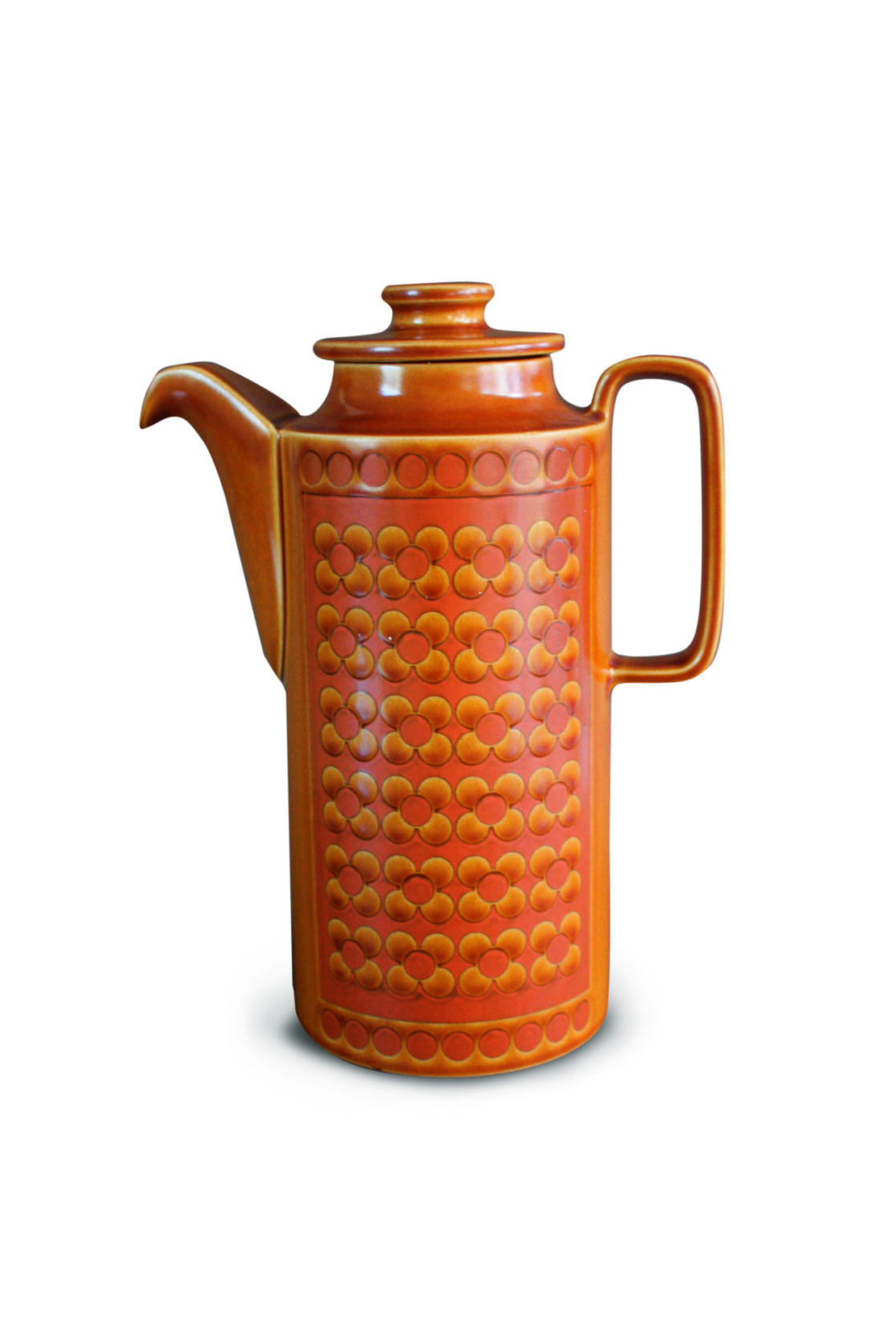
Hornsea Pottery saffron coffee pot | Images: Mike Eley; Adele Howitt
INNOVATIVE TECHNIQUES
Hornsea Pottery’s chief designer John Clappison studied ceramics at Hull Regional College of Arts and Crafts. Realising his potential, the company paid for him to attend a special one-year course at the Royal College of Art in London, where he was awarded the Faculty of Industrial Design Certificate.
As well as innovative new production techniques, new ranges brought Hornsea Pottery to award-winning status, and a beneficial partnership with ceramic design group Queensberry Hunt.
Appointed as chief designer in 1958, he quickly took Hornsea Pottery to the forefront of British design. In 1967, the factory began to produce full ranges of tableware, the first of which included Clappison’s Heirloom, Saffron and Brontë patterns. The pottery developed a unique screen-printing technique that is recognisable on these ranges: they fashioned a revolving machine to directly print onto bisque ware with a resist medium and ceramic colour. The bisque ware was then immersed into a background glaze. When fired, the finish achieved gave the glazed areas a relief appearance, as the glaze stood out against the printed pattern.
Clappison designed lots of innovative items of tableware and decorative pieces over the years, including themed mugs popular during the 1970s. The numerous designs of animals, birds, aquatics, mermaids, et al., were comically depicted in a range of classic Hornsea Pottery coloured glazes.
The mugs now fetch up to £50 each (although recently a Cat and Piranha mug sold for £102 on eBay). While at Hornsea, Clappison also designed the hand- decorated Imprest Fish Eye range in the 1950s, studio vases in the 1960s – rare Aphrodite vases can command prices of over £120 – and wall hangings known as Muramics in the 1970s, which continue to be enthusiastically collected today.
Illustrator Sara Vardy designed the Charisma, Fleur, Tapestry and Cornrose patterns as well as many woodland designs for the themed mug range. Little is known about Vardy, other than that she studied textile design at Eastbourne College of Art and came to Hornsea in 1974. The Fleur range was one of Hornsea’s best-selling designs worldwide, especially in the USA, and was accepted into the prestigious Design Index. The Heirloom shape was reinvented for all three designs: a cream glaze with green and orange for Fleur; blue for the Tapestry range; while the brown outlines of the Cornrose pattern were produced using a resist screen-printing method and a cream background was glazed over the chocolate brown body. This classic 1970s design is known as the Ironstone body.
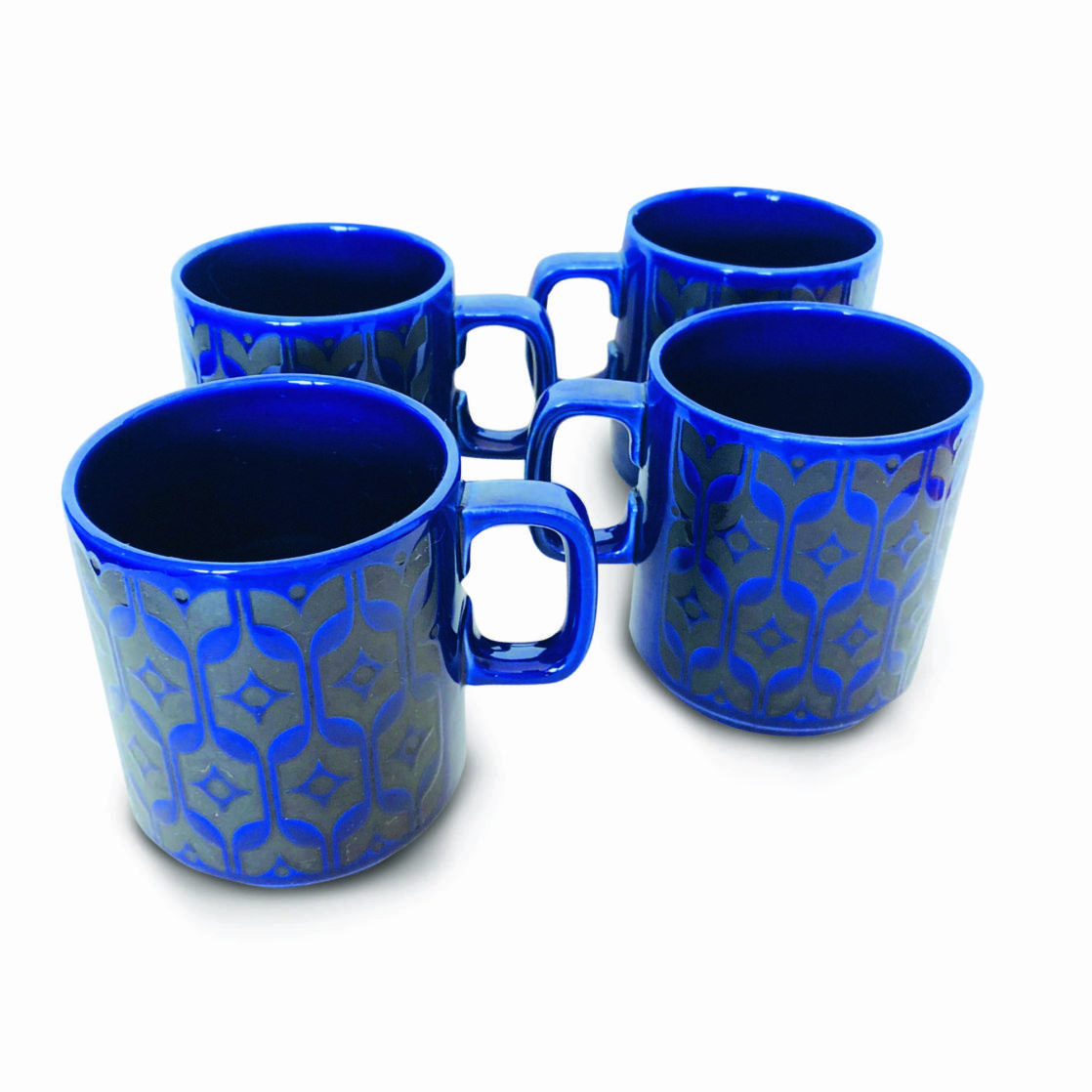
Four Hornsea Pottery blue heirloom mugs | Images: Mike Eley; Adele Howitt
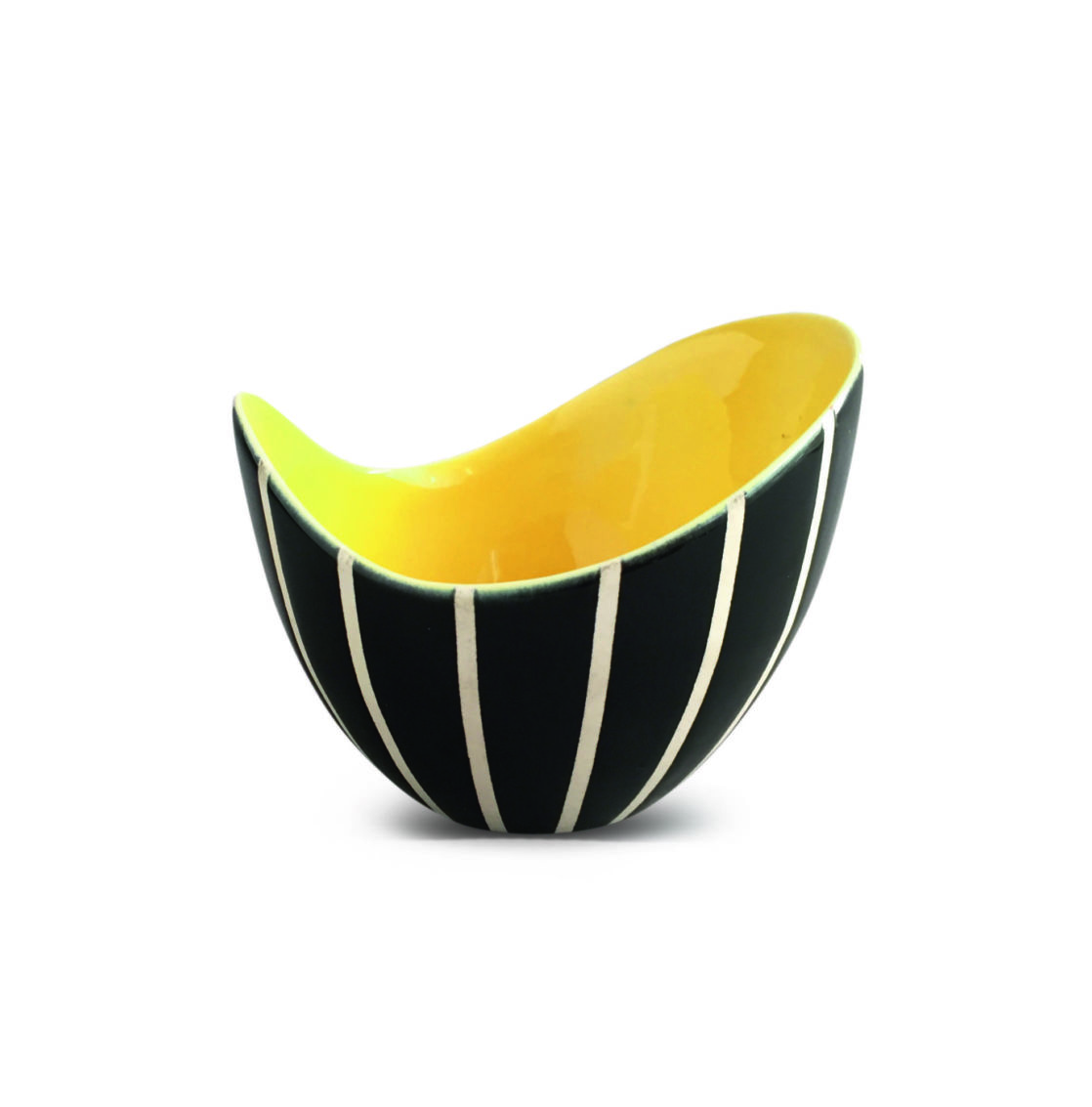
Hornsea Pottery Elegance range by John Clappison | Images: Mike Eley; Adele Howitt
AWARD-WINNING DESIGNS
As well as innovative new production techniques, new ranges brought Hornsea Pottery to award-winning status, and a beneficial partnership with ceramic design group Queensberry Hunt. Colin Rawson approached the Design Council for recommendations to recruit a shape designer and the partnership with Queensbury Hunt was born.
Hornsea’s international best-selling oven to tableware range, Contrast, was designed by Martin Hunt in 1974 and Hornsea Pottery won its first Design Council Award in 1975 for the range. Colin Rawson created the unique chocolate brown Vitramic body, produced when the clay is vitrified in a high-temperature firing followed by intense polishing. The pieces were placed into containers loaded with ceramic pellets and vibrated to achieve their pebble-like smoothness. The Contrast range was the first production out of the new factory in Lancaster, which opened in 1974. The site lasted 12 years and enhanced Hornsea Pottery’s worldwide reputation. Contrast tableware is included in the V&A’s collection, as the design signified a period of change within the industrial market as new technologies were adopted. The additional Concept range, which was also designed by Martin Hunt, was produced by Hornsea Pottery from the late 1970s up until 1991.
PUBLIC ART PROGRAMME
In 2015, ceramic artist Adele Howitt won a tender to work with local partners on a town-wide art installation. The Hornsea Art Trail – Potter About Hornsea, is a public art trail that everyone in the community, including visitors and tourists, can engage with on a day-to-day basis. It consists of classic Hornsea Pottery designs that have been reinvented and manufactured into pavement art, art on roundabouts, and set into granite, to tell the story of working and living in the town. Poet Mary Ahern was commissioned to bring to life the many stories from staff that had worked at the factory and to reflect upon the birth of many key designs. Excerpts of the original poetry were abstracted and combined with associated pot profiles to produce a landscaped design, which has been blasted onto granite and embedded into a popular garden now known as The Artisan Garden. The heritage of the designs are captured in a glazed brick pattern of a shoal of fish on a roundabout and an orange Muramic Murmuration sculpture has been placed at a key entrance to the town. To aid the trail and connect it along the high street, there are six pavement art pieces and one large pavement piece outside Hornsea Museum.
As part of the Heritage Lottery funding for the Art Trail, pottery facilities were set up at the local Hornsea School. Students were involved in carving Hornsea Pottery designs into wet bricks sponsored by Weinerberger UK, which are also now installed at The Artisan Garden.
The intention of the trail is to inspire future generations and to continue to celebrate the craft history of the community with access to an education facility, art on the high street, and the full collection of Hornsea Pottery designs, which will be displayed at the Hornsea Museum of Social History, ensuring the heritage of Hornsea continues.
For further details about Hornsea Pottery and the Hornsea Art Trail – Potter About Hornsea, visit hornseamuseum.com; adelehowitt.co.uk | This article is taken from Ceramic Review issue 297 (May/June 2019). For more, subscribe below.
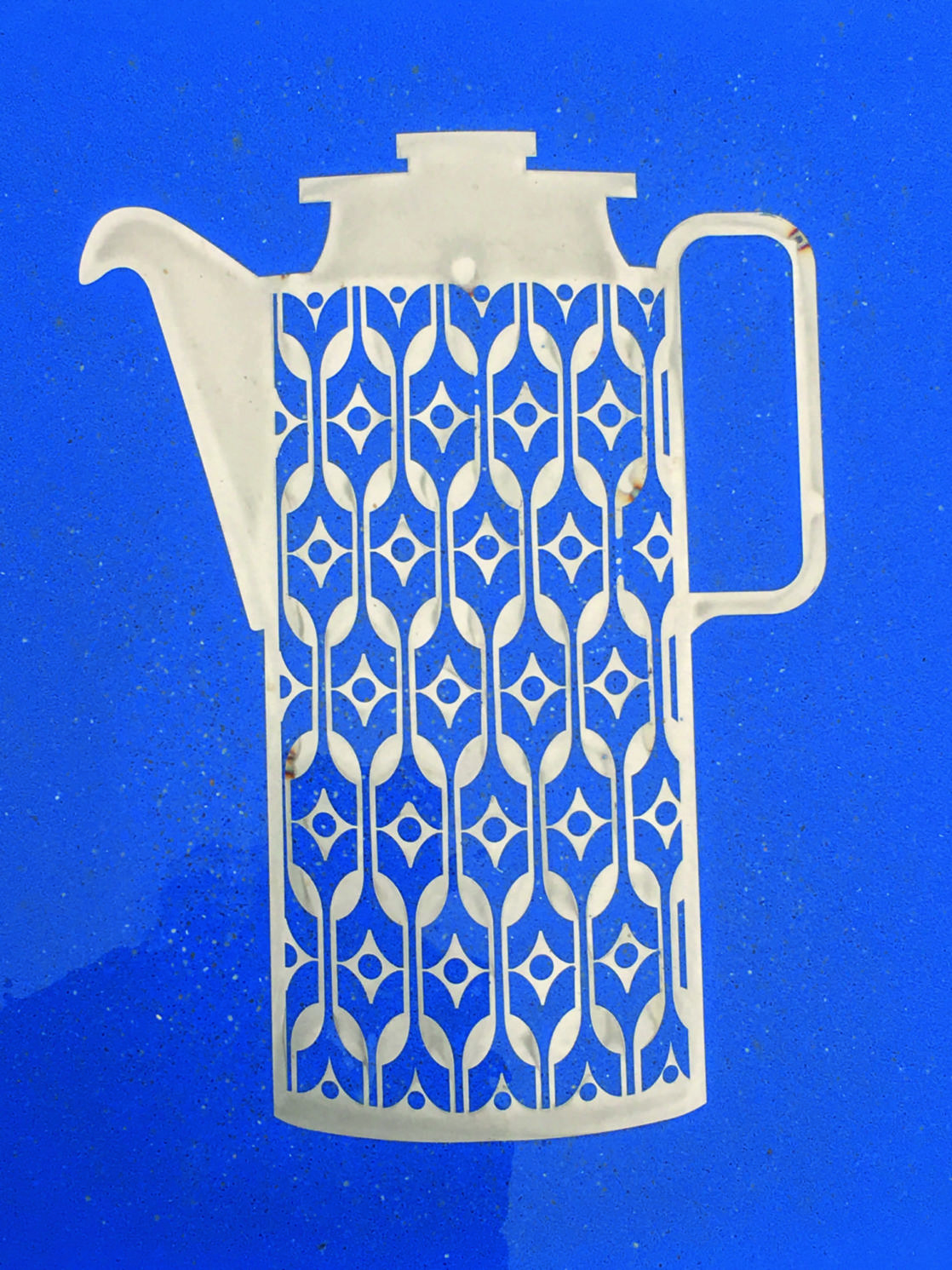
A selection of classic Hornsea Pottery designs have been interpreted as part of an art installation in the town | Images: Mike Eley; Adele Howitt